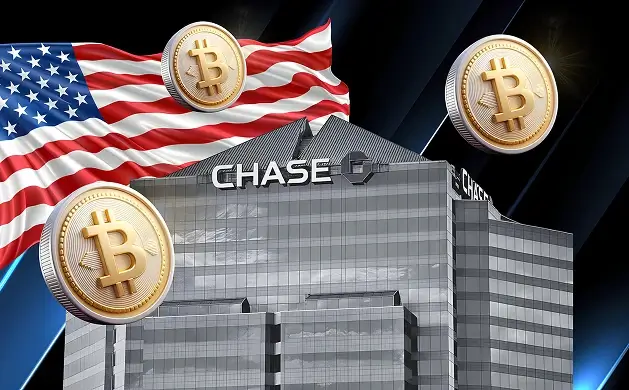What are Actively Validated Services?

Summary: Actively Validated Services (AVSs) use restaking to share security, scaling decentralized systems like sidechains and oracles without new infrastructure.
Securing over $21 billion on Ethereum, AVSs drive innovation but face risks like validator fragmentation and slashing, requiring careful optimization for broader adoption.
What are Actively Validated Services?
Actively Validated Services (AVSs) are decentralized systems that share security resources through restaking mechanisms. First introduced on Ethereum via EigenLayer, AVSs enable validators to secure multiple services without requiring new projects to establish independent security frameworks, reducing costs and improving scalability.
AVSs extend Ethereum’s Proof-of-Stake (PoS) security to applications like sidechains, oracle networks, and data availability layers. Developers can design custom validation models tailored to specific needs, leveraging Ethereum’s validator network for enhanced security. EigenLayer for example, currently secures over $15 billion in ETH restaked, protecting more than 21 AVSs.
This model has also been adopted by other Layer 1 networks like Solana through protocols such as Solayer, which adapt the AVS framework to provide shared security and scalability tailored to their ecosystems.

How Does an AVS Work?
An AVS secures decentralized services by leveraging restaked assets from Proof-of-Stake (PoS) validators. Through protocols like EigenLayer, validators restake ETH or liquid staking tokens (LSTs), allowing their assets to secure multiple AVSs simultaneously.
Each AVS combines off-chain execution with on-chain contracts, which define validation rules, slashing conditions, and payment mechanisms. The process works as follows:
- Restaking: Validators restake their ETH or LSTs through EigenLayer, pooling security across AVSs.
- Custom Validation: AVSs define unique validation tasks, often requiring operators to run specialized off-chain node software.
- On-Chain Enforcement: Smart contracts enforce validation rules, distribute rewards, and penalize malicious behavior through slashing.
- Operator Roles: Operators execute validation tasks using delegated stakes from validators, ensuring AVS-specific requirements are met.
- Scalability: By leveraging Ethereum’s validator network, AVSs scale quickly without needing separate security infrastructures.
This modular architecture allows AVSs to support innovative services with Ethereum-level economic security.
%2525201.webp)
Examples of Actively Validated Services
Over $21 billion in restaked value now secures Actively Validated Services (AVSs) on Ethereum, highlighting their growing role in scaling security and innovation across decentralized apps. Here are some leading AVSs:
- EigenDA: A data availability service enabling high-throughput, low-cost scalability for Ethereum and Layer 2 solutions, inspired by concepts like Danksharding.
- Hyperlane: A modular cross-chain interoperability protocol that facilitates seamless communication between Ethereum, Cosmos, and other blockchain networks.
- Espresso: A decentralized sequencing marketplace and data availability layer for rollups, offering rapid finality and enhanced security through its HotShot consensus and Tiramisu DA.
- Lagrange ZK Prover Network: A zero-knowledge coprocessor for efficient off-chain computation, enabling secure and scalable ZK proofs for decentralized applications.
- Witness Chain: A decentralized network that verifies physical infrastructure data, bridging real-world systems with blockchain ecosystems.
- Omni Network: A low-latency interoperability solution for Ethereum rollups, enabling unified liquidity and seamless cross-rollup communication.
These AVSs highlight how shared security frameworks can transform blockchain infrastructure, improving scalability and trust across decentralized ecosystems.

Do AVSs Exist on Solana?
Yes, Solana supports AVSs through protocols like Solayer, which adapt the AVS model to its high-speed blockchain. Solayer secures over $380M in total value locked across Endogenous AVSs (native to Solana’s Layer 1) and Exogenous AVSs (secured with SOL and SPL tokens).
The top AVSs on Solayer include Sonic with $81M staked, and Bitget Staked SOL with $36M. These AVSs use Solana’s Stake-weighted Quality of Service (SwQoS) to optimize block space and transaction throughput.
Overall, Solana’s AVS ecosystem is nascent, with far less innovation compared to Ethereum. Most AVSs favor Ethereum’s trusted blockspace and mature validator network, limiting adoption on Solana.

Challenges of Actively Validated Services
While AVSs are at the forefront of the next wave of decentralized apps, this still face some technical and operational challenges that require consideration:
- Security Vulnerabilities: Integrating AVSs with restaking protocols increases the attack surface, exposing validators and smart contracts to potential exploits and bugs.
- Slashing Risks: Validators restaking for multiple AVSs face compounded slashing risks if any supported service enforces penalties for downtime, poor performance, or malicious actions.
- Operational Complexity: Running nodes for multiple AVSs demands advanced infrastructure and expertise, creating barriers to participation and concentrating operator roles among a few entities.
- Economic Challenges: Smaller AVSs often lack sufficient validator interest, leading to weaker security and higher operational costs, making it difficult to compete with larger, established services.
- Validator Fragmentation: Competing ecosystems like Ethereum and Solana dilute validator resources, reducing the effectiveness of pooled security models and impacting smaller AVSs.
These challenges must be addressed to ensure AVSs can scale securely and efficiently while maintaining their intended benefits.
Bottom Line
AVSs are redefining onchain scalability by moving from isolated security frameworks to shared trust models, challenging traditional views on decentralization.
With $21 billion staked on Ethereum and $500 million on Solana, they balance innovation with risks like validator fragmentation and slashing.
Whether AVSs consolidate on trusted blockspaces or expand into emerging ecosystems will shape the future of decentralized blockchains and applications.
%2520(1).webp)
Written by
Antony Bianco
Head of Research
Antony Bianco, co-founder of Datawallet, is a DeFi expert and active member of the Ethereum community who assist in zero-knowledge proof research for layer 2's. With a Master’s in Computer Science, he has made significant contributions to the crypto ecosystem, working with various DAOs on-chain.

.webp)

.webp)
.webp)



